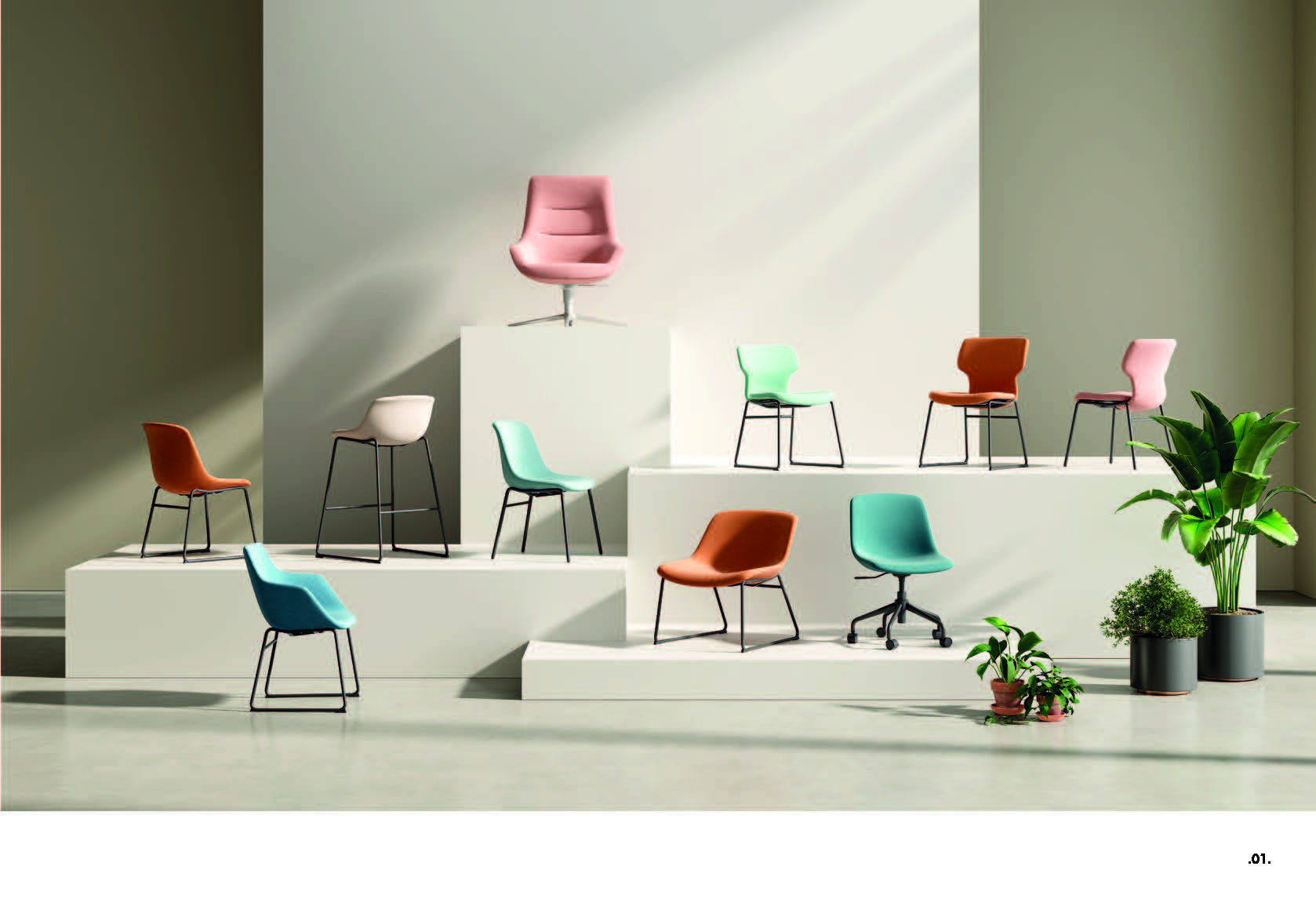Choosing the Right Office Chair: Type of Mechanisms
When shopping for a new office chair, it is important to determine which type of chair mechanism will best suit your needs. There are different types of chair mechanisms available in the market that provide various adjustment and movement options.
Office chairs are available in a multitude of styles and models, which vary according to their materials and manufacture. The five main types of mechanisms used in office chairs are:
1) Swivel & Tilt Mechanism (or Centre Tilt Mechanism)
The Swivel and Tilt Mechanism is the most common mechanism for office chairs. It is used in entry-level chairs, which are generally less expensive than executive-level chairs.
This mechanism allows you to raise or lower the seat height as well as tilting the backrest forward or backward.
The swivel and tilt mechanism was designed to give you a comfortable and relaxed sitting position, which remains the same even when you recline. The mechanism has a lock that lets you keep the seat in its normal upright position, so it can't tilt backwards. And there's a tension adjuster to make it easier or harder for you to recline with the movement of your body.
Since the point of the tilt is in the centre of the seat, your knees will move upwards, and your feet will lift off the ground when reclining backwards. This is caused by the majority of your weight in the tilt position being in front of your legs.

Example of Swivel & Tilt Mechanism
2) Knee-tilt Mechanism
The knee-tilt mechanism is a more advanced option for mid-level office chairs than the Swivel & Tilt mechanism above.
It gives the user the ability to adjust seat height, as well as tilt or recline the backrest.
The mechanism has a 1-position lock, which keeps the chair in its normal position, preventing a rear tilt motion. The tension adjuster allows you to change the resistance of your recline movement, making it slightly easier (or harder) to tilt back.
Unlike a Swivel & Tilt mechanism, The Knee-tilt mechanism moves the recline point from under the centre of the seat to just behind the user's knees, transferring weight from in front of your legs to behind them. This makes it easier to recline back, and also means that your feet and knees won't lift up from the floor when you tilt, resulting in a more comfortable seating experience.
 Example of Knee Tilt Mechanism
Example of Knee Tilt Mechanism
3) Multifunction Mechanism
the Multifunction Mechanism is a lockable mechanism used in mid to top level office chairs, and Managerial and Executive office chairs. It has basic functions similar to those of the previous mechanisms, which enable the user to tilt or recline their chair backwards when applying weight to the backrest. The mechanism also has a tension adjuster allowing you to adjust the tension of your recline motion.
Similar to the Knee-tilt mechanism, the Multifunction mechanism, the point of recline is just behind the knees; this creates a reclining position with less effort and without lifting the feet or knees off the floor.
The difference between the two? The Multifunction mechanism allows the user to lock the chair in various positions that range from the normal upright position, to the back tilt, front tilt and anywhere in between.
 Example of Multifunction Mechanism
Example of Multifunction Mechanism
4) Synchro Tilt Mechanism
Used in mid to high end ergonomic office chairs, the Synchro Tilt mechanism have the basic function of an up or down seat height adjustment.
Similarly to the previous mechanisms, Synchro Tilt mechanisms allows the chair back to tilt or recline when weight is applied to the backrest. Having a tension adjuster enables the tension of your recline motion to either make the recline sightly easier (or harder) to tilt backwards.
Setting the Synchro Tilt mechanism apart is the independent movement of the seat and backrest when tilting or reclining backwards. Done in a 2:1 ratio, for every 2 inch backwards tilt is applied, the seat tilts by 1 inch. This functionality creates a more fluid motion while also keeps users in an ergonomic position without lifting your feet off the ground.
Built specifically for ergonomic purposes, the Synchro Tilt mechanism avoids rocking motions and come with multi position locking. The Synchro Tilt mechanism is therefore suited to users who value ergonomics and who want to have more control over their movement.
 Example of Synchro Tilt Mechanism
Example of Synchro Tilt Mechanism
5) Weight Sensitive Mechanism
The Weight Sensitive Mechanism is used in mid to high level ergonomic office chairs, but are increasingly becoming used in entry level office chairs
Again, while providing basic seat height functionality of upwards and downwards adjustment the point of difference in Weight Sensitive mechanisms lie within simplicity.
Simplistic, clean and minimalistic in design, Weight Sensitive mechanisms dont have the normal levers or knobs and have no lockable functions. Instead, Weight Sensitive mechanisms automatically adjust to put users in the best possible ergonomic position for your body.
 Example of Weight Sensitive Mechanism
Example of Weight Sensitive Mechanism

